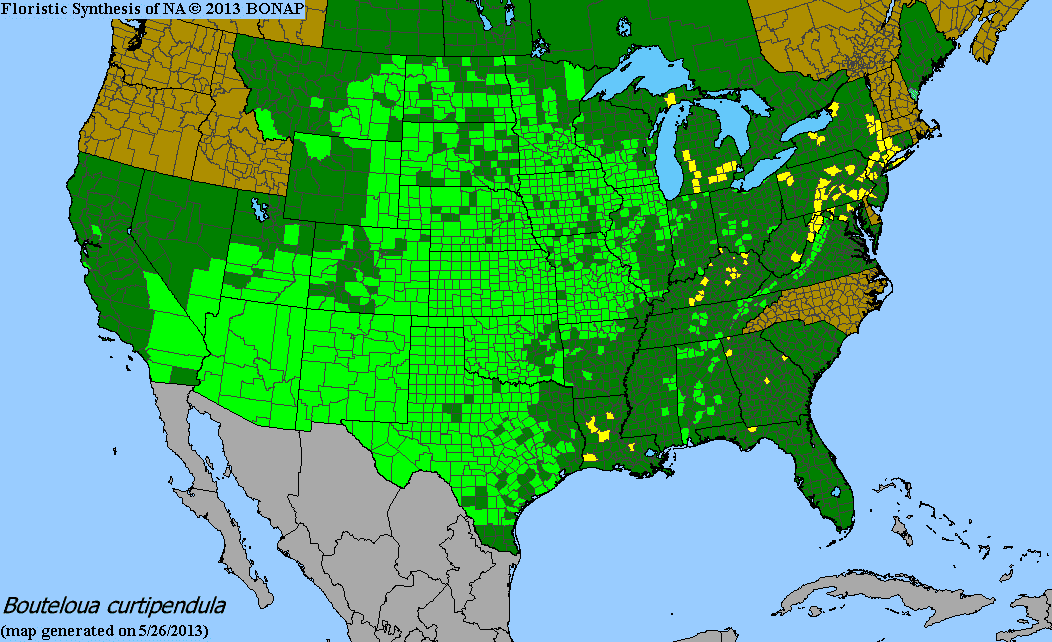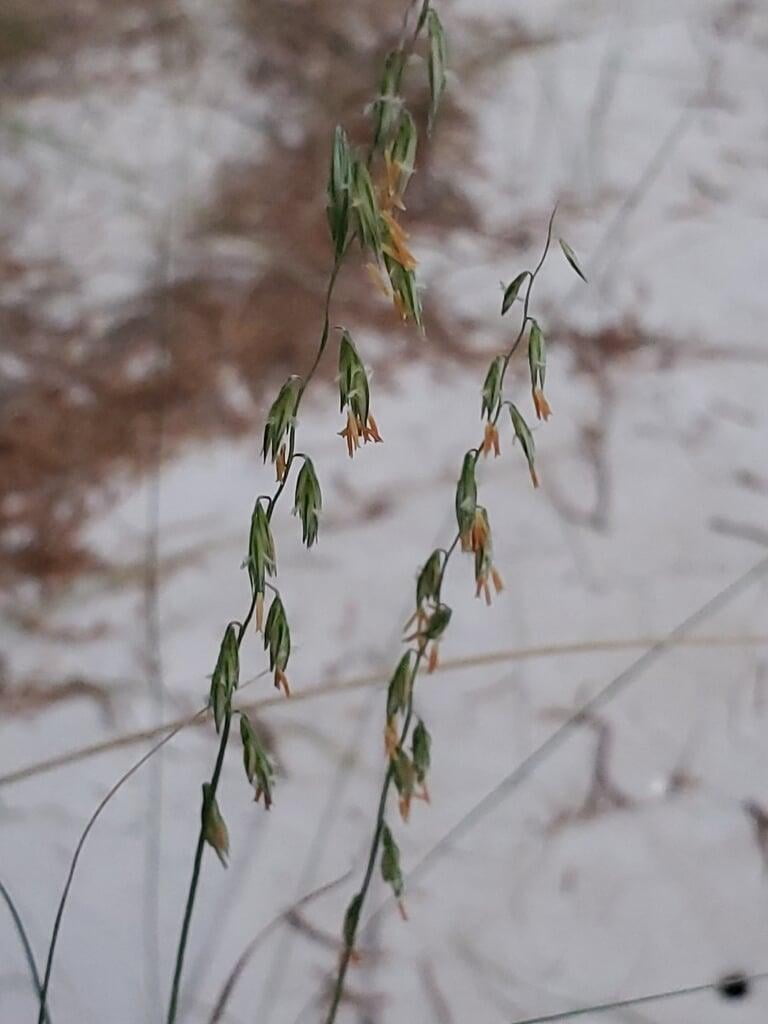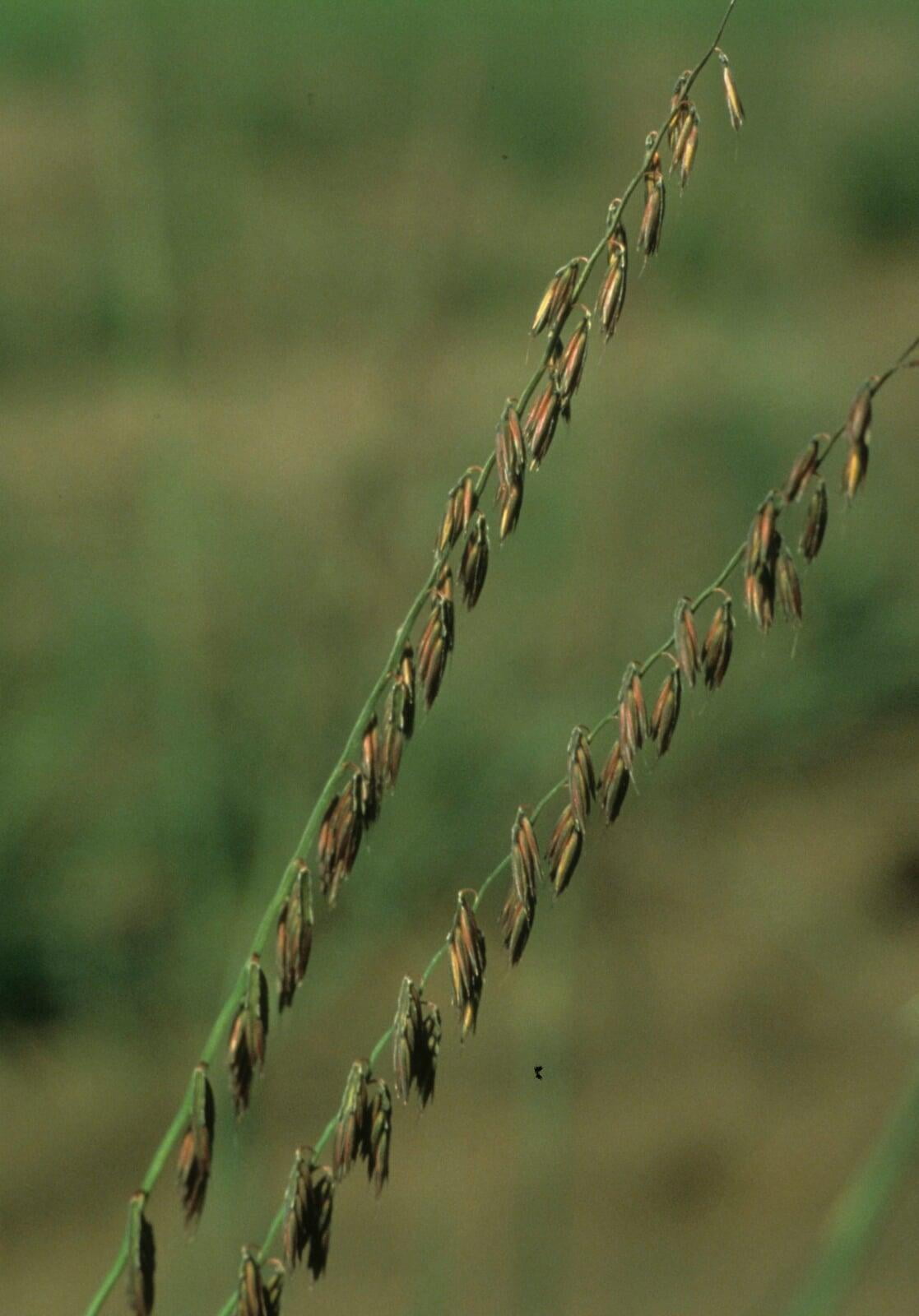Bouteloua curtipendula
Side oats grama Description:
Bouteloua curtipendula, also known as sideoats grama, is a warm-season, perennial grass native to North America. It is a member of the Poaceae family and is found throughout the Great Plains region of the United States, from Montana and North Dakota in the north to Texas and Mexico in the south.
The grass grows in dense clumps, with stems that can reach a height of 1-3 feet. It has narrow, linear leaves that are about 1/8 to 1/4 inch wide and up to 12 inches long. The leaves are green or blue-green in color and have a rough texture.
The most distinctive feature of Bouteloua curtipendula is its flower spikelets, which are arranged in a distinctive pattern along one side of the stem, resembling a row of oats hanging from one side of the stem. The spikelets are about 1/2 inch long and have bristly, reddish-brown awns that can be up to 3 inches long. The flowers bloom from mid-summer to early fall and are a source of food for many pollinators, including bees and butterflies.
Bouteloua curtipendula is an important component of prairie ecosystems, where it provides food and habitat for many grassland species, including bison, pronghorn, and grassland birds. It is also commonly used in range and pastureland restoration projects, as it is drought-tolerant and can survive in a variety of soil types.
Native Range:
Side oats grama is found in most of the United States with the exception of a few states on the West coast and East coast. Primarily found growing in the Central portions of the country.
Standard Plant Information:
Plant height: 1' - 3'
Fruiting time: June - August
Preferred habitat: Does well in full sun with dry sandy or rocky soil. Often found in prairies, open woodland, rocky slopes, and bluffs.
Sowing:
For most homeowners, the best option is to scatter seed on the ground by hand broadcasting at a minimum of 15-16 pls lbs per acre. For even coverage, we recommend that you broadcast seed in perpendicular rows across the site to ensure even coverage.
Planting:
Simply dig a hole in the soil slightly larger than the plant’s roots. Ensure that the soil line of the plant is maintained during the transfer (i.e. the plant should be at the same level with the ground as it was in the pot). Pack any loose dirt back around the plant and make sure you water it well the same day to ensure it has the best chance of survival.











